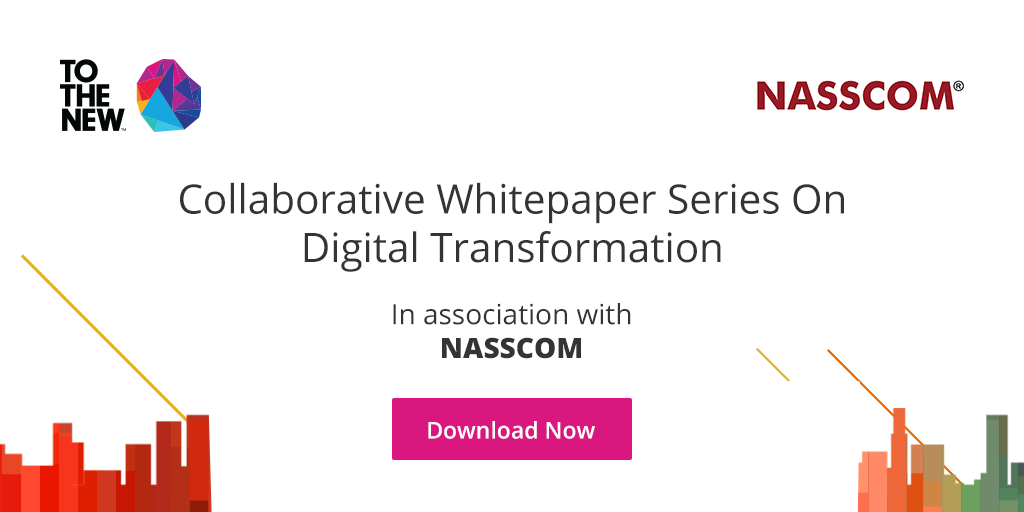How Digital Transformation Is Reshaping Businesses To Meet The Digital Age? The CX Context!
There has been a significant growth in the digital advances over the last few years. Companies are leveraging technologies and advances such as Artificial Intelligence, Virtual Augmentation, Machine Learning, IoT, Mobility, and Cloud to build disruptive products. While some of the digitally evolved companies have been able to tame these advances well, some others are still struggling to improve customer experience, inject operational efficiency and reinvent business models.
Technologically superior companies that are bidding farewell to the legacy way of working and embracing digital transformation across the organization are mainly looking at three pillars of transformation:
- Customer Experience – Making it more digital and seamless
- Business Model – Launching more digital products and adding new revenue streams
- Operations – Modernizing the infrastructure to enhance the efficiency
In this blog, we will be focusing on customer experience. Oracle’s Global Insights on Succeeding in the Customer Experience Era surveyed 1,300 senior executives and estimated that their company’s potential revenue loss for not offering a positive, consistent, and brand-relevant customer experience is 20% of annual revenue or $400 million for a $2 billion company. Forrester’s August 2015 “The Revenue Impact of Customer Experience” report states that just a one-point gain in the Customer Experience Index was found to be worth $175 million in additional revenue to a wireless provider, $118 million to a luxury automaker, and $65 million to an upscale hotel chain. we have outlined 4 ways brands are uplifting their customer experience.
Another survey from Forrester also echoes the fact mentioned in the above surveys. According to Forrester, 72% of companies feel CX should be their top priority.
Clearly, customers need to be at the center of every strategy. Customers are taking full control of how they want to interact with a brand and on which touchpoint. They want to have access to information across channels and at all the times. Companies that are adapting to the changing customer behavior are surviving the digital disruption.
Companies are not only digitizing products to help meet the evolving customer demands but also syncing the physical and digital worlds so that they are able to provide superior digital user experience over and above the traditional CRM.
Outlined below are four key areas that brands are focusing on for improving the digital experience:
- Provide Seamless Experience across Channels
Customers are present across channels and using multiple devices to communicate to a brand. It is, therefore, crucial to provide a seamless multi-channel experience to customers. Brands are leveraging wearable devices, developing smart TVs applications and evaluating various second screen alternatives to maximize reach and improve the experience for digital natives. According to one of the blogs by Salesforce, 75% of consumers expect a consistent experience wherever they engage (e.g., website, social media, mobile, in- person).
According to Aberdeen Group, Companies with extremely strong omnichannel customer engagement retain on average 89% of their customers, compared to 33% for companies with weak omnichannel customer engagement.
- Change internal operations to enhance efficiency
Improving the efficiency of existing operations is vital. Some companies are leveraging concepts such as BYOD to make the workforce more productive and mobile. Some others are automating internal processes, following Agile product engineering principles and streamlining daily tasks to ensure that the operations remain efficient.
Brands are also ensuring that they bridge the gap between Dev and Ops team, change backend operations and make the frontend experience more intuitive, implement the content management system for easy authoring and use test automation to mitigate vulnerabilities.
- Personalize end user experience
Conceive of a scenario, your favorite e-commerce shop didn’t remember your last purchase and recommends buying the same thing again. Bummer!
Personalizing and contextualizing experiences is extremely important. Some data-driven companies leverage analytics and data to ensure that enough predictive intelligence is applied before recommending a product to a customer. According to “The Balancing Act Report” by Yahoo in May 2014, website visitors choose to exercise control over personalization through a variety of mechanisms. Almost two-thirds would like the option for privacy controls. Just over half (58%) want personalization based only on user information they proactively provide. Yet another group (38%) will specify their individual interests so that the site can personalize content.
Outlined below are some of the common ways brands personalize customer experience:
- Increase customer advocacy and brand loyalty through data and analytics
- Customer journey mapping and profiling
- Real-time information exchange
- Design discovery and usability analysis
- Leverage technology and automation
Brands that are betting big on customer experience are backed up by robust technology and automation. Imagine if there were no data mining tools or filtering engines, churning data would be so difficult. Some of the evolved product companies have started automating redundant tasks of development and operations using DevOps tools to bring products faster to market and make their delivery pipeline really efficient. They ensure that they shorten their release cycles and automate to resolve complex bugs, improve build quality and thereby the overall customer experience.
Some companies are also ensuring that they have zero downtime so that the customer experience is not compromised. Companies are investing in infrastructure monitoring tools to get custom alerts.
If you are thinking Digital Transformation is just the industry buzz – think again! Customers are transiting to digital channels and consuming information on various online touchpoints, competitors are investing in digital products and it is the context that sticks and sells! In such times, transforming the legacy way of working is a not just the vogue, but a necessity. In collaboration with Nasscom, we have authored a series of whitepaper covering various pillars of Digital Transformation and how are brands adapting the digital technologies. The first in the series is the whitepaper that outlines customers experience and 4 ways brands are changing it along with case studies from the real world.


